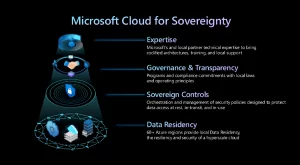Running containerized applications in public cloud environments provides an easy way to get started without any upfront investment in infrastructure. Underlying technologies and compute power that runs the apps can be subscribed to for a monthly subscription fee and consumed on demand if necessary. There is no worry about managing infrastructure that you have to deploy, manage and secure whether it is bare metal or a virtualization technology.
Public cloud deployments can be risky. A spike in demand or subscribing to additional storage or load balancing services will easily rack up a bill that is unexpectedly high. Applications built in public clouds run according to whatever approach is decided by the developer. As an organization grows, DevOps teams and developers will start having different ways of deploying the same application unless the processes that have been designed are more standardized across the organization. Anyone can go to an open source distribution of an application and start using it as they see fit.
Unplanned expenses and a lack of control by central IT will cause IT leaders to rethink how they want to go to market with new digital initiatives. Scenarios where “repatriating” or even developing new digital services will be better served if back on-premises. Bare metal alternatives will also be considered with the perception that containers could run more efficiently.



